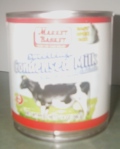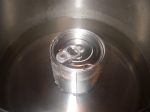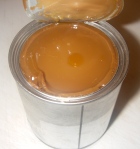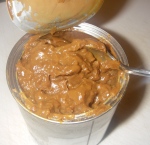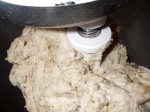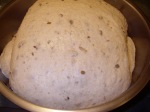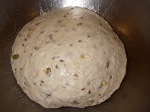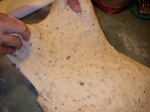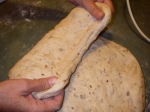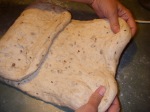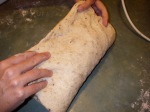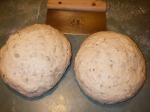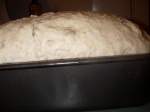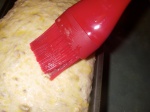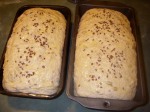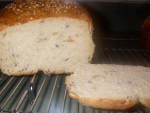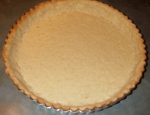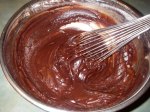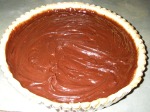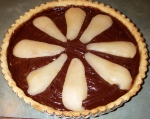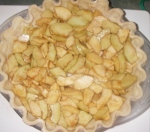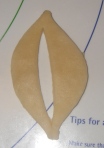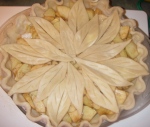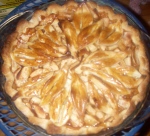You can buy dulce de leche in any gourmet shop for $9 or $10 for 16 oz (a little over a cup in volume), or you can buy a can of sweetened condensed milk for $3 or less and make your own. There are fiddly, time-consuming ways to make your own, or you can just pop the can in your slow cooker or pressure cooker, which is my idea of convenience.
If you do it in the slow cooker, you put the can in the crock, add water to not quite the top of the can, put the lid on the cooker, set it on low, and leave it for 8 hours. I imagine you could do several cans at once this way, and I think I’m going to try that. What I like about the slow cooker is you can leave the house while it’s on. I would never leave the house with the oven or stove on. You could set this up at bedtime and take the cans out in the morning. The procedure is a little time sensitive, so if you’re not on a strict 8-hour sleep schedule, you could overcook the milk and end up with stiffer caramel than you want.
What I did today was put the one can in the pressure cooker, add 2 quarts of water, bring it up to pressure, and let it cook for 45 minutes. People are afraid of pressure cookers, but they’re safer now than they used to be, and if you pay attention and follow directions, they’re brilliant. Some people use them all the time. Indians use pressure cookers daily to cook things like beans without spending hours at it, and nothing bad happens.
To make your own dulce de leche in the pressure cooker, start with a can of sweetened condensed milk.
Remove the label, put the can in the pressure cooker, and add 2 quarts of water.
Check the pressure cooker’s lid to make sure the gasket is installed correctly, and look through the steam vent to make sure you can see through the hole. Lock the lid on the pan. The lid lock itself will stay down until the pressure builds up. Once the pressure has built up in the pan, the lock button rises to lock the lid on.
When the time is up, remove the pan from the burner and let the whole thing cool. For many applications (e.g., cooking beans), you can run cold water over the pan until the lid lock drops and then remove the lid, but you shouldn’t do that with a can in there because the can will still be very hot and could burst open. You can run cold water over the closed pan, and when the pan has cooled enough that it’s only warm to the touch, you can safely remove the lid from the pan. At this point, the can will be warm but not too hot to handle, and you can open it and see what you have.
Of course, the milk continues to cook in the can while you’re waiting for it to cool, and I think 40 minutes would be better, because this is pretty stiff.
It’s delicious, though. I’ll be using some of it in an apple tart in the next day or two. This might be a good consistency for filling cookies or macarons.

